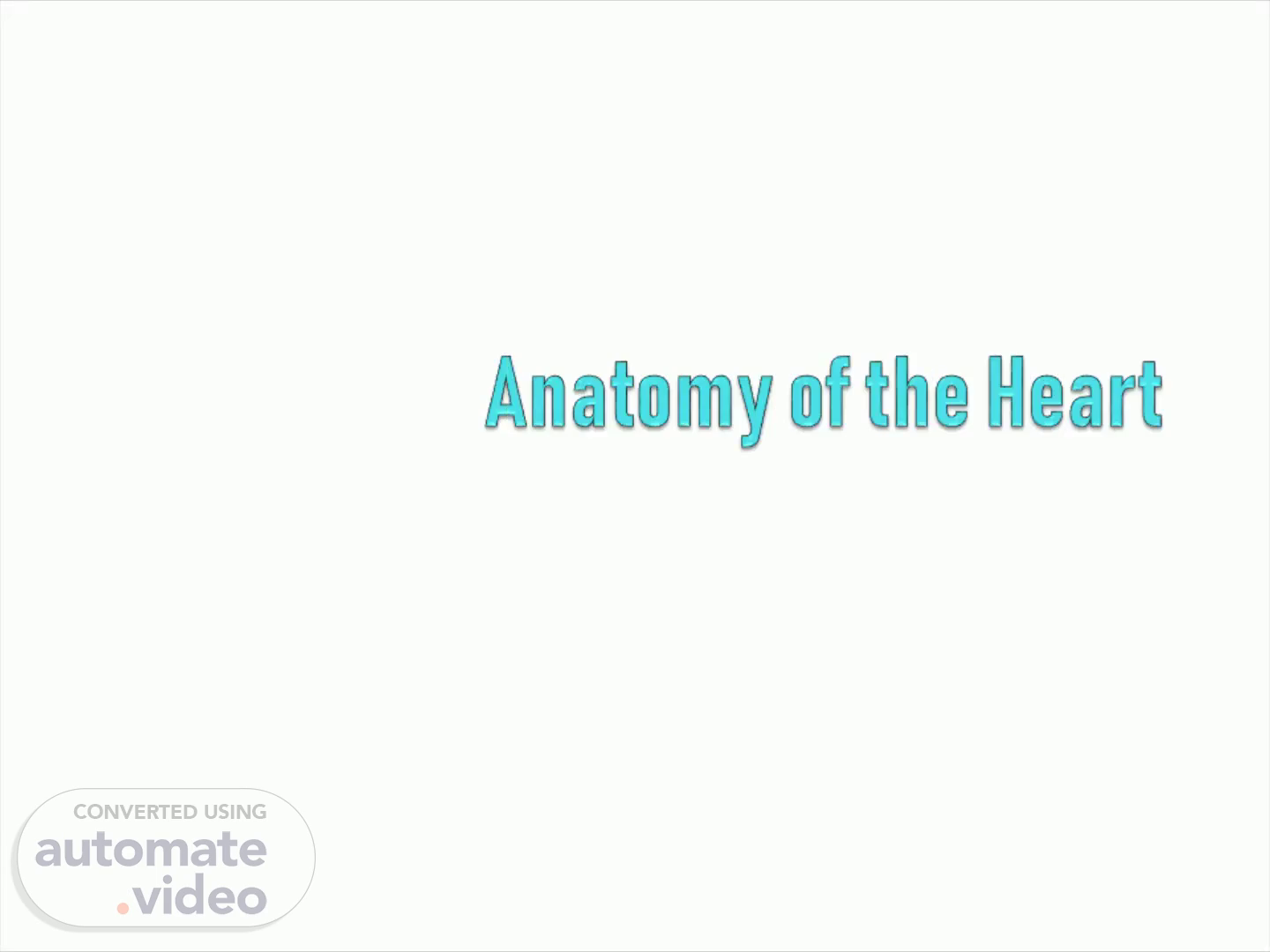
Page 1 (0s)
Anatomy of the Heart. Module 1.
Page 2 (6s)
Learning Objectives. By the end of this module the learners will be able to: Explain the external and internal heart anatomy Identify the layers of the heart wall Blood circulation system of the heart Understand the structure and function of heart Understand the electrical Conduction system of the heart..
Page 3 (23s)
Table of Contents. Introduction Anatomy of the heart Layers of the heart wall Structure and Function Heart valves Blood circulation Nerve Supply Heart Conduction System.
Page 4 (34s)
The human heart is a muscular organ that collects deoxygenated blood from all parts of the body and carries it to the lungs to become oxygenated and released to all parts of the body..
Page 5 (54s)
Heart pumps around 72,000 litres of blood everyday throughout the body..
Page 6 (1m 4s)
A human heart is conical shaped enclosed within the pericardium. It positions posterior to the body of the sternum, one-third of it is situated on the right and two-third on the left of the mid-line..
Page 7 (1m 26s)
The heart wall consists of three layers-. Epicardium- the outer layer of the wall of the heart is formed by the visceral layer of the serous pericardium..
Page 8 (1m 57s)
The heart is sub-divided through a septa into right and left halves further each half is subdivided into two cavities, the upper cavity is atrium and lower cavity is ventricle..
Page 9 (2m 22s)
Deoxygenated blood is pumped by the right ventricle via the pulmonary semilunar valve into the pulmonary trunk to get it oxygenated in the lungs..
Page 10 (2m 47s)
The human heart has four valves with a single purpose to facilitate forward flow of blood and prevent blood from backward flowing..
Page 11 (3m 16s)
The left coronary artery carries 80% of the blood to the heart muscle..
Page 12 (3m 42s)
The control of the heart stays with the medulla oblongata. The cardio-acceleratory centre, or pressor centre, is present in the upper part of the medulla oblongata, and the cardio-inhibitory centre, or depressor centre, in the lower part. These two are together known as the cardioregulatory centre, as they interact to control heart rate, etc..
Page 13 (4m 11s)
The sympathetic nervous system speeds up the depolarization rate by acting up on the sinoatrial node, this leads to increased heart rate..
Page 14 (4m 30s)
Heart Conduction System. The pumping of the heart and contraction of chambers is regulated by an electrical conduction system. The electrical system generates electrical impulses which stimulates the heart muscles to contact and pump blood. Some of the major elements in the cardiac conduction system are the sinus node, atrioventricular node, and the autonomic nervous system..
Page 15 (4m 49s)
The sinus node is considered as the heart's natural pacemaker. It is a cluster of cells situated in the upper part of the wall of the right atrium where the electrical impulses are generated there..